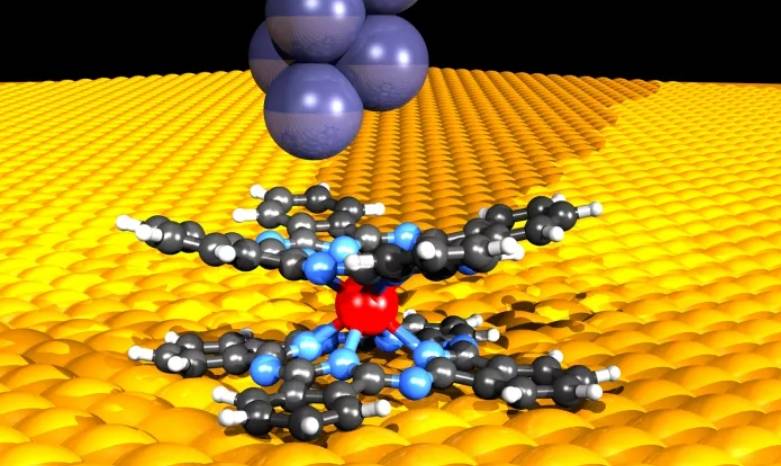Innovations in technology alter the demand for resources and disrupt raw material markets. However, what raw materials will be necessary for tomorrow’s technology and in what quantities?
Sweden recently discovered the most extensive rare earth deposit in Europe, with over one million tons projected, according to LKAB, the Swedish mining company. These raw materials are essential not only for the energy industry but also for various other industries.
The discovery of rare earths in Sweden can have a significant impact on the economy by creating new job opportunities and fostering economic growth. However, it is crucial to ensure sustainable and responsible extraction to minimize environmental damage.

A report from the Fraunhofer Institute for Systems and Innovation Research ISI suggests that roughly 100 innovative technologies hold the potential to impact the raw materials market in the future. These technologies are expected to drive changes in demand, leading to new raw material requirements by the year 2030.
In the case of neodymium, a metal that strengthens magnetic fields, if the factor reaches 3.8, the demand will be approximately 3.8 times higher than the current total annual world production.
The demand for metals such as iron, copper, and chromium will likely continue to be driven by emerging countries like India and China due to their significant backlog demand. In addition to these commonly used metals, the availability of raw materials such as gallium, neodymium, indium, germanium, and scandium will also determine future technologies, which are expected to be in high demand by 2030.
The production of pure gallium has traditionally been very costly in terms of energy and labor. As a result, countries with low processing costs, such as China, have been the main producers of pure gallium, which is a by-product of aluminum production. Gallium is an essential component in the manufacture of LED lights, which are considered to be the future of lighting technology due to their long lifespan and high energy efficiency. Gallium is also used in some semiconductor components of LEDs, with around 0.53 milligrams of gallium required for a LED measuring around one square millimeter.
At present, Chinese mines predominantly supply 280 tons of gallium per year, which may increase to 420 tons annually in the near future. By 2030, the demand for gallium is expected to reach 600-800 tons per year. As a result, experts predict further price hikes for the metal. Additionally, new applications in the fields of 3D printing and thin-film photovoltaics are being discovered.
Neodymium for permanent magnets
Neodymium, a rare earth metal, has gained significant attention in recent times due to its usage in the strongest permanent magnets currently available in the world when combined with iron and boron alloys. These magnets find application in DC motors, linear motors, and generators.
Hybrid vehicles require up to 20 kilograms of neodymium per unit, and with the anticipated market growth, the demand for neodymium in hybrid vehicles alone is expected to reach around 7,100 tons by 2030. Siemens uses approximately 1.5 tons of magnetic material per three to 3.2-megawatt system in their wind turbines. The neodymium content is less than 30 percent, but still several 100 kilograms of neodymium are installed in each turbine.
The production of neodymium is considered critical due to its almost exclusive sourcing from China. In the early 2010s, China artificially restricted neodymium production, leading to significant price hikes.
Indium is another metal with promising future prospects, as it is essential for the functioning of flat screens, touch screens, and mobile phone displays. This rare, silvery-white heavy metal is as abundant in the earth’s crust as silver.
The majority of the world’s indium production is used for the production of indium tin oxide, a material that is both conductive and transparent, and heat-resistant. When applied as thin layers, it allows visible light to pass through and is used in the production of LCDs for flat screens and touch screens. In thin-film solar technology, certain indium compounds have set records for converting light rays into electrical energy, particularly indium gallium diselenide compounds (CIGS). A recent announcement from the Center for Solar Energy and Hydrogen Research (ZSW) highlights that scientists at the Stuttgart site have achieved an efficiency of 22% for thin-film solar cells made from copper-indium-gallium-diselenide, due to optimized production processes.
According to ZSW, the experts’ preferred alternative to conventional silicon photovoltaics could soon gain a larger market share, which could result in increased demand for CIGS technology. This trend could also lead to the consumption of larger amounts of indium. The expected annual requirement of around 2000 tons by 2030 exceeds the current annual world production of 800 tons. Another significant consumer of indium is smartphones, with approximately three milligrams used in each phone.
Rare earths from the sea

Indium is another element that has a high raw material consumption rate, second only to gallium. The primary supplier of indium is also China, which leads to supply chain uncertainties. Current estimates suggest that there are around 50,000 tonnes of indium reserves. The extraction of rare metals from the seabed is being explored as a potential source of raw materials in the future, as the deep sea is considered to be an important supplier.
There are vast deposits of raw materials at the bottom of oceans, and Germany has already obtained licenses for future mining in those areas. Researchers are currently investigating profitable mining techniques. Indium is one of the metals that are feared to experience a resource shortage due to the expected explosive increase in demand.
Germanium is another metal that is experiencing a significant surge in demand. Its most promising application is in the field of fiber optic cables. The technological breakthrough of implementing fiber optics in communication systems has revolutionized the way we communicate.
Scandium is expected to become increasingly important in the future due to its unique properties. If its development proves to be economically viable, its properties could be utilized in future technologies. The trend towards lightweight construction may be further strengthened by high fuel prices and the effects of climate change.
Scandium’s limited availability has restricted its use to military aviation, where scandium-aluminum alloys have shown promising results. Additionally, the use of scandium in fuel cells can boost efficiency by three to five times. Therefore, keeping an eye on ongoing scandium projects is recommended.
Recycling processes for metals are being developed through research projects, but currently, they do not play a significant role in end-of-life devices. However, this could change in the future due to shortages of these metals and environmental policy requirements.




